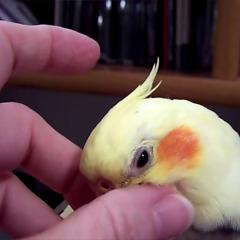Zamioculcas can be planted with a sprig. Ways to breed zamiokulkas
Zamioculcas is a perennial evergreen plant belonging to the aroid plant. The homeland of this plant is in East Africa, or rather, it is the Zanzibar Plateau. It only got to Europe at the end of the twentieth century from Dutch nurseries and immediately gained immense popularity with gardeners, thanks to its unusual exotic look.
Zamioculcas refers to succulent plants. It has very beautiful complex leaves, consisting of leathery glossy sheet plates, which are arranged in pairs. The rhizome is a tuber from which the cuttings emerge.
Plant height can reach from sixty centimeters to one and a half meters. The flowers of the plant are of rather interesting shape, consisting of a rather large lime cob, and the surrounding color of the coverlet that surrounds it. Learn how it looks dollar tree can be on the photo accompanying this description.
Zamioculkas is the scientific name of the flower popularly known as a dollar tree. It is for certain not known where such name appeared from. Some believe that because of the color of the leaves, resembling new dollar bills, others because of the high cost or because of its ability to attract money to the house in this currency unit.
Another zamiokulkas call a flower female happiness. According to the signs, if it comes to bloom in indoor conditions, which is not often, then its owner will find real female happiness. Although many do not know why they believe that zamiokulkas is a celibate flower. How blooms zamiokulkas shown in the first photo in this article.
Also called:
- Zanzibar pearl or Zanzibar gemstone - at the place of growth;
- Fat man - because of the peculiar look;
- Eternal tree - because of the very slow growth.
Zamiokulkas zamielist - the only species of this plant. It is also called Zamiokulkas Loddidzhesa, by the name of the man who first discovered it in 1856. Currently, due to the huge popularity of this plant, breeders are actively working to create its new varieties.
The dollar tree propagates by dividing the rhizome, rooting a whole leaf (branch) or leaf plates.
How to propagate zamiokulkas division of rhizome
To do this, remove the dollar tree from the pot, clean the rhizome from the ground. Then it needs to be divided into pieces (tubers) with a disinfected knife and slightly dried. Each of them is planted in an individual pot. In the future, they are the usual care.From this article you will find out what alokazia is like and how to take care of it.
And what looks like fat adenium, and look for other information on this plant variety.
Reproduction zamiokulkasa leaf (branch)
To reproduce a dollar tree with a leaf, you need to choose a healthy leaf and cut it at ground level. If it is too long, it can be cut into several pieces (cuttings). Slices need to be treated with activated charcoal and lightly dried.It is better to plant them in wet vermiculite. Watering with water can be alternated with watering with growth stimulant solution. After rooting, tuber formation begins, which should reach about five centimeters in diameter in order for a new shoot to emerge. This process takes several months. Young plants grow very slowly, their active growth begins only two months after planting.
Leaf propagation
 To do this, separate the required number of leaflets from the plant, dip the sections in crushed activated carbon and leave for a couple of days. Then they should be planted in small pots with a mixture of peat and sand, lightly poured over and covered with a glass jar.
To do this, separate the required number of leaflets from the plant, dip the sections in crushed activated carbon and leave for a couple of days. Then they should be planted in small pots with a mixture of peat and sand, lightly poured over and covered with a glass jar. This breeding method is the longest, new shoots have to wait until six months. During this period, you need to regularly remove the shelter for watering and ventilation of seedlings.
All methods of breeding zamiokulkas at home is best done in a bright room at a temperature of twenty to twenty-five degrees.
How to transplant Zamiokulkas
Zamiokulkasa home transplantation is usually carried out in the spring period once every two to three years. Since adult plants, unlike young ones, grow very quickly, rare transplants of a dollar tree into another pot somewhat inhibit its growth. At the same time, they should not be transplanted correctly, but overloaded. To do this, carefully remove the zamiokulkas from the tank, without disturbing the earth coma. Then it must be placed in a new pot with a good drainage layer and the remaining gaps are filled with soil, while the upper part of the tubers must rise above the soil.For zamiokulkasa need a light breathable earth, which is well permeable to water. From ready-made soil mixtures you can buy soil for cacti and succulents. In order to prepare the soil yourself, you can use the following components:
- Turf ground - one part, leaf earth - one part, humus - one part, coarse sand - three parts;
- Turf ground is two parts, leaf earth is one part, peat is one part, coarse sand is one part.
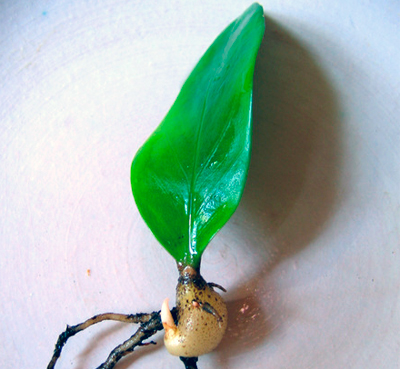 Pot for zamiokulkasa need to choose wide and low with the obligatory presence of drainage holes. Since the young zamiokulkas begins active growth only after the roots reach the walls of the container, then for transplanting it is necessary to take a pot a little more than the previous one. In too large a capacity, slowing down of the already slow growth of the plant will occur.
Pot for zamiokulkasa need to choose wide and low with the obligatory presence of drainage holes. Since the young zamiokulkas begins active growth only after the roots reach the walls of the container, then for transplanting it is necessary to take a pot a little more than the previous one. In too large a capacity, slowing down of the already slow growth of the plant will occur.
If we talk about which pot is better to choose ceramic or plastic, in the case of zamiokulkas it does not matter. Of course, a ceramic pot is much harder and will not allow a strongly expanded plant to turn over, and it also looks more impressive.
On the other hand, when transplanting a plastic pot in the case of a heavily overgrown root system, you can easily cut and remove the plant from it. Ceramic pot will have to be broken, which may lead to damage to the roots and further death of the plant.
Important! During all work with the plant, gloves must be used, since the zamiokulkas are poisonous.
Read before buying zamiokulkas
When buying a dollar tree, you need to carefully examine it, the plant must be well developed and healthy. If it is sold in a package, it must be removed to assess its condition. After the purchase is not worth immediately transplant Zamiokulkas. This can be done in a few weeks to allow the plant to adapt to the new environment. Depending on the size and condition of the dollar tree, the price for it can range from six hundred rubles to two thousand. Zamioculcas is a rather unusual and picturesque plant that can be a worthy decoration of any room. At the same time, in the opinion of many experienced flower growers, it does not cause much trouble in growing, and this has deserved such great popularity.Detailed transplantation of zamiokulkasa and its reproduction by leaf is shown in the following video:
Zamiokulkas is a popular indoor plant, valued by gardeners for its decorative green leaves. It can not be called capricious, but it multiplies rather reluctantly. Seeds are almost impossible to get, so you have to resort to vegetative methods of reproduction (you can use all parts of the plant), while being patient.
What does Zamiokulkas look like
Zamioculcas (Zamioculcas) is a genus of the Aroid family (Aroideae). From the point of view of most botanists, he is a monotype, having a single representative - Zamiokulkas zamielist (zamiifolia) or Loddizhesa (loddigesii). Others distinguish between two and four varieties.
In nature, zamiokulkas forms continuous carpets of bright green leaves.
Homeland plants - plateaus in the south and southeast Africa. Conditions, by human standards, there are extreme. But the plant has successfully adapted to them. Like most local representatives of the flora, Zamiokulkas is a succulent, which is not typical for the Aroids, in principle.
During the short rainy season, it accumulates moisture in the thick fleshy petioles of the leaves, stems, and underground tubers. This "NZ" helps him survive a long drought. If the plant has a very bad condition, it discards leafy plates, leaving only petioles and streaks (axis-rachis). This helps to reduce the evaporation area.
The name of the flower is due to the fact that its leaves are very similar to the leaves of another African plant - zamie (in the literal translation of "zamiokulkas" - "zamiepodobny"). The final name was not approved immediately. The first version (“Caladium zamielistny”) belonged to the famous British lover of exotic flora, Konrad Loddizhesu. He first described the plant in 1829, but, not being a specialist in the field of botany, mistakenly included it in the Caladium genus, although he was not mistaken with the Aroid family.
The inaccuracy was corrected only in 1856 by an even more famous botanist from Austria, Heinrich Wilhelm Schott. He singled out the plant in a separate genus, "christened" Zamiokulkas and named after the discoverer. Since the beginning of the 20th century, an intermediate version has become established in literature - zamiokulkas zamielistny.
In addition to the official name, the plant quickly acquired a multitude of nicknames - “dollar tree”, “eternal” or “aroid palm”, “zanzibar pearl”. Especially fond of Zamiokulkas in China. There, he is considered a symbol of the New Year, and the Feng Shui doctrine connects the welfare of the owner with it.
 In China, where Feng Shui teaching is especially popular, Zamiokulkas are often used to decorate the interior of office premises, thus attracting good luck in business.
In China, where Feng Shui teaching is especially popular, Zamiokulkas are often used to decorate the interior of office premises, thus attracting good luck in business.
Fans of indoor plants appreciate it for the beauty of the leaves. They are glossy, dark green, thin, but rather stiff to the touch, complex in shape. The sheet plate is cut into 8–12 individual “feathers” - for the Aroids, this is also a unique phenomenon. Small vague spots of inky-purple color fit into the norm. From a distance, a flower seems artificial at all, because the leaves are very even, one-dimensional.
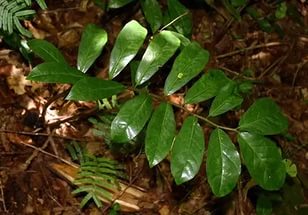 A leaf of a zamiokulkas of a difficult form is not a separate leaflet, but the whole "plate"
A leaf of a zamiokulkas of a difficult form is not a separate leaflet, but the whole "plate"
Zamiokulkas growth rate is no different, but at home it is rather an advantage. Often, the old leaves it sheds faster than it forms new ones. The maximum height in "captivity" is about 1 m.
Zamioculcas is distinguished by a developed root system. It consists of powerful tubers and thick worm-like roots that extend from them. If the plant is not transplanted for a long time, the cramped pot, which prevents further growth, may even crack under their pressure.
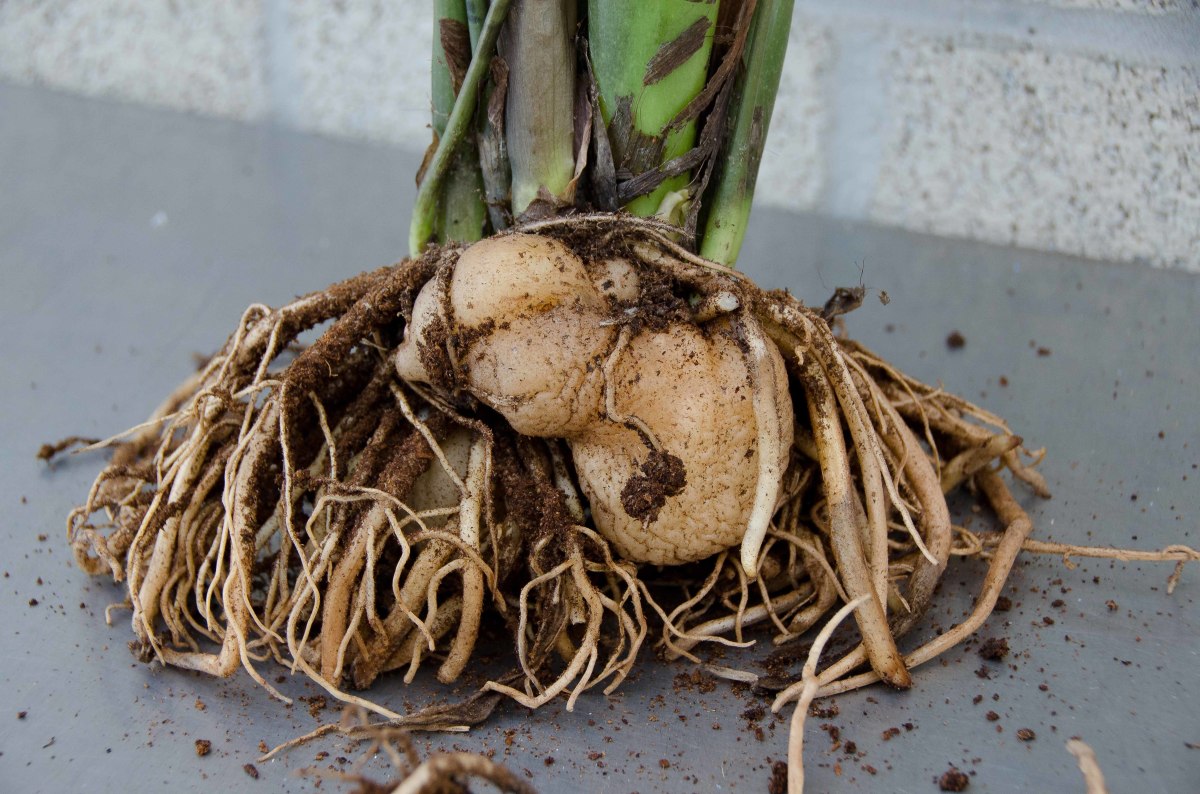 The root system of the zamiokulkas is very developed, it is in the tubers that the plant stores the main supply of moisture and nutrients
The root system of the zamiokulkas is very developed, it is in the tubers that the plant stores the main supply of moisture and nutrients
The flowering of zamiokulkas not only at home, but also in nature is an extremely rare phenomenon. It can only be expected from mature adult plants. Then the ear is covered with large berries, each contains one seed.
Zamiokulkas has an alternative almost unique way of reproduction. The base of the leaves that have fallen to the ground gradually thickens, turning into a tuber, which then forms the roots and goes underground, releasing new shoots.
But upset about the lack of flowering is not worth it. The spectacle is definitely not outstanding. Small yellowish-cream flowers are collected in a thick ear, tightly wrapped with a pale green or light beige veil. Inflorescence is located in the lower part of the plant, in the bosom of one of the leaves, so it is almost imperceptible. WITH at home, emena are not tied up in principle, even if “helping” a flower by artificially pollinating it. According to the experience of most lovers of indoor plants with experience, flowering often means the quick death of this specimen.
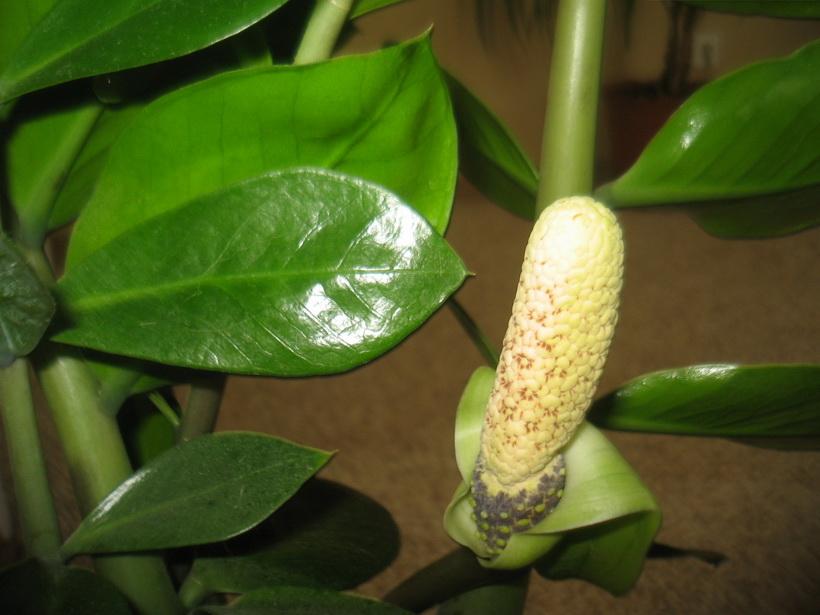 The flowering of Zamiokulkas is definitely not the most attractive sight in the world.
The flowering of Zamiokulkas is definitely not the most attractive sight in the world.
Video: appearance and other characteristic features of zamiokulkas
What you need to know before starting the procedure for breeding at home
Propagating zamiokulkas at home, you should first of all be patient. The process is guaranteed to stretch for several months. The fact is that at first the plant forms a fairly powerful tuber, and only then begins to build up the green mass.
It should also be remembered that, like all Aroids, Zamiokulkas is poisonous. The leaves contain juice, which, upon contact with the skin and mucous membranes, causes irritation, redness, rash. With a tendency to allergic reactions even serious burns are possible, and if ingested, severe indigestion. Therefore, to any work with the plant start only with gloves, and after finishing, carefully wash their hands.
Despite the theoretical availability of seeds, at home, the plant propagates exclusively by vegetative means. To get them is problematic, and the germination procedure is very complicated, time consuming and ineffective.
The tuber of the plant is gaining mass, sucking the nutrients from the cutting, leaf, part of the stem. Therefore, the fact that the above-ground part turns yellow and shrinks is a normal phenomenon, and not a sign indicating the failure of the operation. Wait for the emergence of fresh shoots will have quite a long time.
With any method chosen, the future zamiokulkas provide heat and bright diffused light. The containers are placed in a home mini-greenhouse or covered with glass caps, cut with plastic bottles, placed in a tightly tied plastic bag. Landings are aired every day, but they are watered very moderately, wetting only the substrate at the edges of the pot.
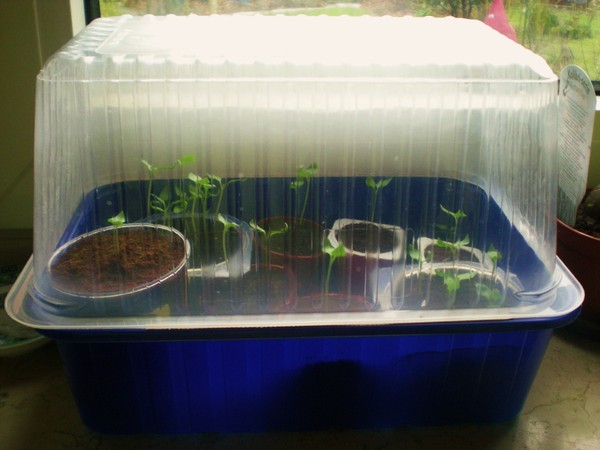 Mini-greenhouse is ideal for rooting zamiokulkasa cuttings
Mini-greenhouse is ideal for rooting zamiokulkasa cuttings
It is important to choose the right soil for young plants. In the heavy clay soil, Zamiokulkas degenerates, the leaves shrink and deform. Suitable substrate for cacti and succulents or dekorativnolistvennyh indoor plants. But this is not ideal, so it is better to mix it yourself from leafy soil, peat and sand (1: 1: 1). A useful additive (5–7% of the total) is vermiculite, perlite, crushed pumice, crumb of old red bricks, small pieces of charcoal (best of all birch). The material absorbs excess moisture, preventing the development of rot. He also makes the soil lighter, creating the possibility of good aeration.
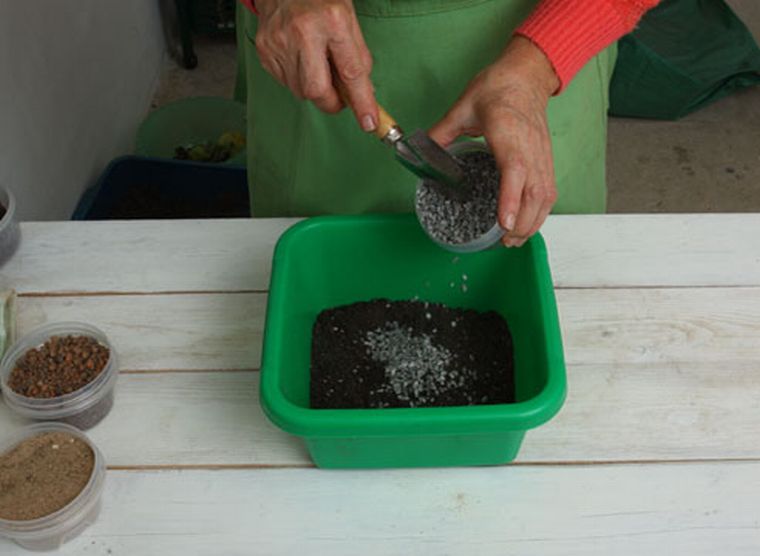 Zamioculkas is picky about the quality of the soil - the soil should be light and loose
Zamioculkas is picky about the quality of the soil - the soil should be light and loose
Do not forget about the drainage. A layer of expanded clay or small pebbles must be at least 4–5 cm thick.
 Experienced growers say that the formation of zamiokulkas tubers is faster in the ground, but it is also possible to root in water
Experienced growers say that the formation of zamiokulkas tubers is faster in the ground, but it is also possible to root in water
Step by Step instructions
At home, for reproduction of zamiokulkas, leaves or their parts, stem cuttings, tubers are used. Each method has its advantages and disadvantages, which must be assessed before proceeding to the procedure.
Cuttings
Zamiokulkas stalk is a part of a leaf plate with two oppositely spaced or three “feathers” (if it is the tip). You can plant individual leaves, but the larger the cutting, the faster the rooting will go. Best time for planting material - late spring or early summer.
The “donor” plant must be an adult (at least 5–6 years old) and completely healthy, the base of the shoot from which the leaf is taken is semi-woody. Just acquired zamiokulkas will not work. In stores, flowers are often treated with growth stimulants and other chemicals. Such drugs reduce the likelihood of rooting cuttings to almost zero. We'll have to wait at least a year to count on success.
- Cut the leaves, divide them into cuttings with a sharply sharpened disinfected knife.
- Allow the planting material to dry for 2–3 hours. The cut should be covered with a thin layer of "cork" (weathered).
- Fill small containers with drainage material (1/3 volume) and wet sand, perlite, vermiculite, finely chopped peat moss. Also suitable a special soil for the cultivation of Saintpaulia (violets) and cacti. An alternative is rooting in water at room temperature with the addition of a few tablets of activated carbon, potassium permanganate crystals or any fungicide.
- Powder the base of the petiole with a powdered biostimulant. Land it in the ground, deepening about 2-3 mm. Gently seal the substrate.
- Ensure the planting of the lower heating, high humidity (70% or more), the temperature of about 22–25 ºС. As the substrate dries, moisten it with a weak solution of root formation stimulator, but very moderately. The first time is not earlier than 3-4 days after disembarkation.
- In about two weeks, the first roots should appear. Then watering can be slightly increased.
- New tubers are formed in 7–8 weeks. After that, rearrange the zamiokulkas to a permanent place, take care, as an adult plant.
- The appearance of the first leaves can be expected at best in 5-6 months. Norm - 7–8 months. If they are twisted and covered with a reddish film, this is normal.
Video: Zamiokulkas reproduction by cuttings
- Use a sharp, clean knife to cut the leaves at an angle of about 45º. Let them dry for 24 hours.
- Sprinkle the bottom third with a mixture of powdered activated charcoal or crushed chalk with any biostimulator.
- Plant the leaves in a wet substrate - a mixture of peat chips and sand (1: 1). They need to be buried in the ground by about a third. It is not recommended to root them in water - the tubers and roots are weak.
- Cover landing. Provide a temperature of 22–24 ºС. Ventilate the greenhouse daily, spray it as the soil dries.
- After about 2-3 months, the leaves will dry. But small tubers are formed, about the size of a pea.
- After the appearance of the first new leaf (on average in half a year), transplant the plants into pots with a diameter of 7–10 cm, filled with a ground for rubber plants or palm trees. Do not forget the drainage. Further care is normal.
- Dry the planting material during the day. Particularly large tubers may need 2-3 days.
- Fill the pots with a diameter of 10–12 cm with a mixture of fertile turf, leaf ground, sand and peat (evenly) with the addition of fine expanded clay and humus (5% of the total). At the bottom of the drainage layer is required.
- Plant the tubers in containers, deepening to the substrate by no more than 3-5 cm. Care for them as an adult plant, completely eliminating feedings and replacing the spray with watering. The first time fertilizer can be applied in 4-6 weeks.
- Two or three leaves a year for a rooted tuber is normal. About a year later, transplant Zamiokulkas into the soil for adult plants.
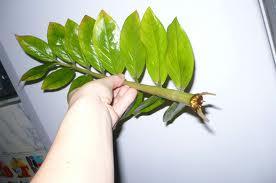 “Stalk” of zamiokulkas - lower part of leaf stem
“Stalk” of zamiokulkas - lower part of leaf stem
The procedure is no different from rooting individual “feathers” with one exception. Parts of the stem are placed on the substrate, and not stuck vertically. The dense skin is tentatively incised in several places with a razor blade or a thin scalpel. Ring notch depth - no more than 0.1–0.2 mm. These places are covered with soil.
How to dilute the division of tubers
A plant with a height of at least 50 cm is suitable for this. After its purchase, at least a year must pass The best time for the procedure is from mid-April to late September.
The division of the tubers is carried out simultaneously with the transplant. The roots of the plant, extracted from the pot, gently unwound hands, individual tubers are separated. Try to minimize the damage caused by them. Any "wounds" immediately handle.
 After dividing a tuber, transplanted zamiokulkas cannot be fed within 4–6 weeks.
After dividing a tuber, transplanted zamiokulkas cannot be fed within 4–6 weeks.
Care for young plants
To accelerate the growth of a new instance of Zamiokulkas, you need to properly care for it.
- Young plants do not like transplantation, so the procedure is carried out no more than once a year and only by the method of transshipment. After that, the tree does not water for 3-4 days.
- The lack of moisture tolerates the plant better than its excess. Regular overflow will quickly lead to rotting tubers. Even in the heat, only two waterings per month are sufficient, and then if the top layer of soil in the pot dries out.
- Direct sunlight and lack of light are equally destructive for young plants. In the first case, the young Zamiokulkas will get burns, in the second - the shoots will stretch, the leaves will lose their color intensity, and are crushed. Ideal for him - a bright but diffused light.
- Top dressing preferred foliar. They are carried out no more often than once every 15–20 days, sprinkling the leaves with a solution of any complex mineral fertilizer for ornamental leafy indoor plants. As a result, the cuttings are compacted, the leaves get a very beautiful rich shade.
- To preserve the decorativeness of zamiokulkas will help a regular warm shower. But they wash only the above-ground part, covering the substrate with a polyethylene film.
Possible problems and their solution
Based on the fact that the homeland of the zamiokulkas is the hot African tropics, we can fairly conclude that the plant is very enduring. In fact, the only danger threatening young specimens is rot. Often the florist himself is to blame for her appearance, turning the soil in a pot into a swamp. If at the same time the room is pretty cool, the appearance of a pathogenic fungus is almost inevitable.
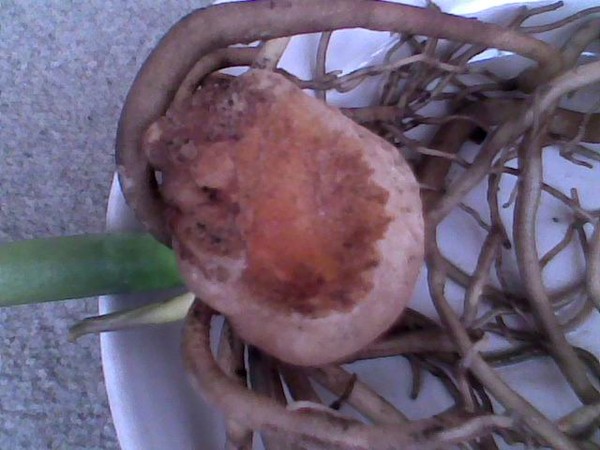 To avoid the appearance of rot, you need to follow all the recommendations for the care of the plant, especially those related to watering.
To avoid the appearance of rot, you need to follow all the recommendations for the care of the plant, especially those related to watering.
Young Zamiokulkas should be inspected regularly. Anxiety symptoms - black-brown "weeping" quickly spreading spots on tubers, stems and leaf petioles. Save the plant can only be at an early stage of development of the disease. If the damaged parts are easily separated from it, the soil becomes covered with mold, it gets an unpleasant putrefactive smell, there is no chance anymore. Such a zamiokulkas can only be thrown away. Therefore, you need to act quickly.
- Cut off all affected leaves and shoots. The knife must be sharp and disinfected. "Wounds" sprinkled with crushed chalk, activated charcoal, colloidal sulfur.
- Remove the plant from the pot. For 25–30 minutes, soak the tubers in a bright pink solution of potassium permanganate or in a 1% solution of any fungicide (Bordeaux liquid, XOM, Kuprozan, Skor). Let them dry for 2-3 hours.
When the growers are faced with the question of how to propagate a zamiokulkas, the first thing to consider is the size of the existing plant. If the parent plant is adult and large, it can be divided into several subsidiaries; if it is very young, it will be optimal or separate leaf plates; if the plant is of medium size, insufficient for dividing it with a bush, but already having several shoots, the method of breeding the dollar tree will be optimal by cutting.
This method has several advantages. First, the graft, or more simply, the process, contains more nutrients to maintain the necessary vital functions of the still unrooted plant, which gives a greater chance of successful rooting than during leaf propagation. Secondly, compared with the division of the bush, grafting is possible even with two or three branches-grafts. The downside is that the mother plant will become less luxuriant by the size of the cut branch. However, the larger the cutting, the more likely it is to turn it into a full-fledged healthy plant in a shorter period of time than when it reproduces by leaf.
We will tell you more about how to propagate zamiokulkas by cutting. First of all, look at the available plant. It is advisable to choose a strong formed cutting, not forgetting that its size is directly proportional to the rate of rooting and the positive dynamics of this process. The selected process must be carefully separated from the mother plant with a sharp knife, scalpel or blade. Recall that the stem is called part of the stem with at least one bud. Thus, a large stalk can in turn be divided into several, but in this case rooting will be harder. Then the cutting is placed in water with activated or charcoal and left on the window, making sure that the cutting does not rot, periodically pouring fresh water, until roots appear. After that, the roots of the dollar tree are planted in the prepared soil. 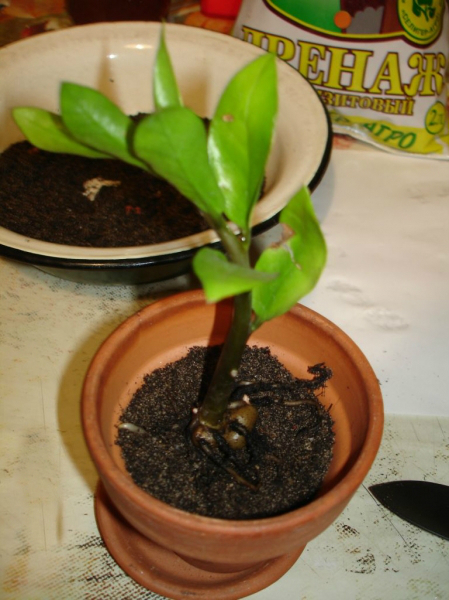
Another way of cutting Zamiokulkas is that the cutting of the cutting immediately after separation from the mother plant is treated with crushed activated carbon or cinnamon (however, coal gives the best result), and left for several hours to close the juice-conducting tubules and form a cork layer on the cut, which prevents plant decay. After that, the cutting is placed in the prepared light nutrient moist soil (do not forget to put drainage on the bottom of the pot) to such a depth that the lower part of the bud is in the ground and the upper part on the surface. To achieve the best results, the planted cutting is placed under the transparent cap-teplichku (you can use a glass jar, plastic container or plastic bag). Water the cutting should be gradually around the perimeter of the pot, trying not to fall on the kidney. From time to time, the cap must be removed to air the soil. The fact that the plant started growing shows the appearance of the first twisted leaflet covered with a reddish film.
For those who decide to plant zamiokulkas, reproduction by cutting will be the best option, because it gives more chances for successful rooting and takes less time than in the case of a leaf or leaf plates, and does not require such a large original plant, as when dividing the bush. Do not forget that when working with plants, a positive attitude and patience are important. The plants will surely appreciate your care, attention and perseverance and thank you with all sincerity with their lush greenery, fast growth and beauty!
May 22, 2016 Zamioculcas
Zamioculkas is an amazing shrub whose ornamental foliage attracts many gardeners. This flower is originally from Africa, which explains the presence of a massive root tuber, which retains a fairly decent amount of moisture. Based on this, the shrub does not require constant abundant watering; in the case of zamiokulkas, it is better to under-fill than to pour. Its dense dark green leaves are as if covered with a wax coating, thanks to which the flower looks gorgeous. The plant is a long-lived, it is unpretentious, for the cultivation is well suited and the usual sod land. This handsome loves the light, in the summer will feel great on the street. With proper care, it will delight all year round with its luxurious foliage. Zamioculkas, according to the teachings of Feng Shui, is able to increase the money in the house, so he wears another name "dollar tree."
The flower is endowed with a very interesting structure. That part of the plant, which is used to be called a branch, is actually a leaf of a zamiokulkas. And the individual leaves are leaf blades of one large complex leaf. And just the same, these plates are widely used for plant reproduction.
Leaf propagation is the most accessible and simple option, because it will require only:
- healthy leaves;
- the required number of plastic sudochkov for the number of leaves (well fit the bottoms of plastic bottles);
- haydite, foam or other pebbles to create drainage;
- a mixture of peat and perlite.
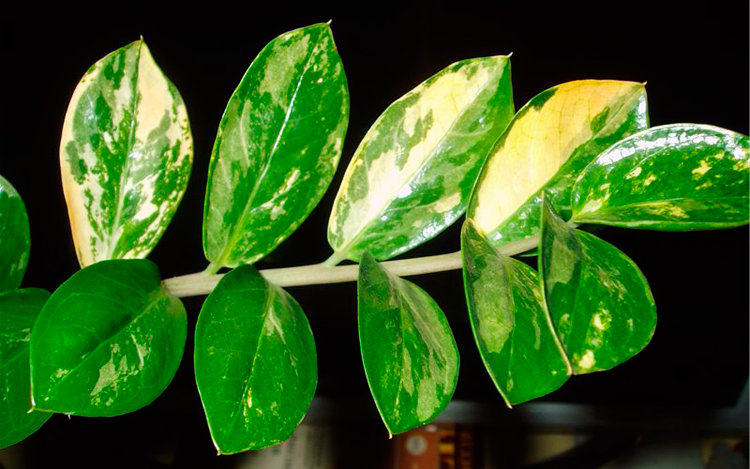
The process of this vegetative propagation method for zamiokulkas includes the following algorithm of actions:
- The first thing to do: gently break off the desired number of leaf blades;
- Dry the plates leaving them for a couple of hours and sprinkle with a slice with a special tool intended for rooting or charcoal.
- Prepare a tank for the ground: make a few holes at the bottom with an awl;
- Lay on the bottom of the drainage so that it occupies the third part of the sudochka;
- Prepare the soil: mix two parts of peat and one perlite;
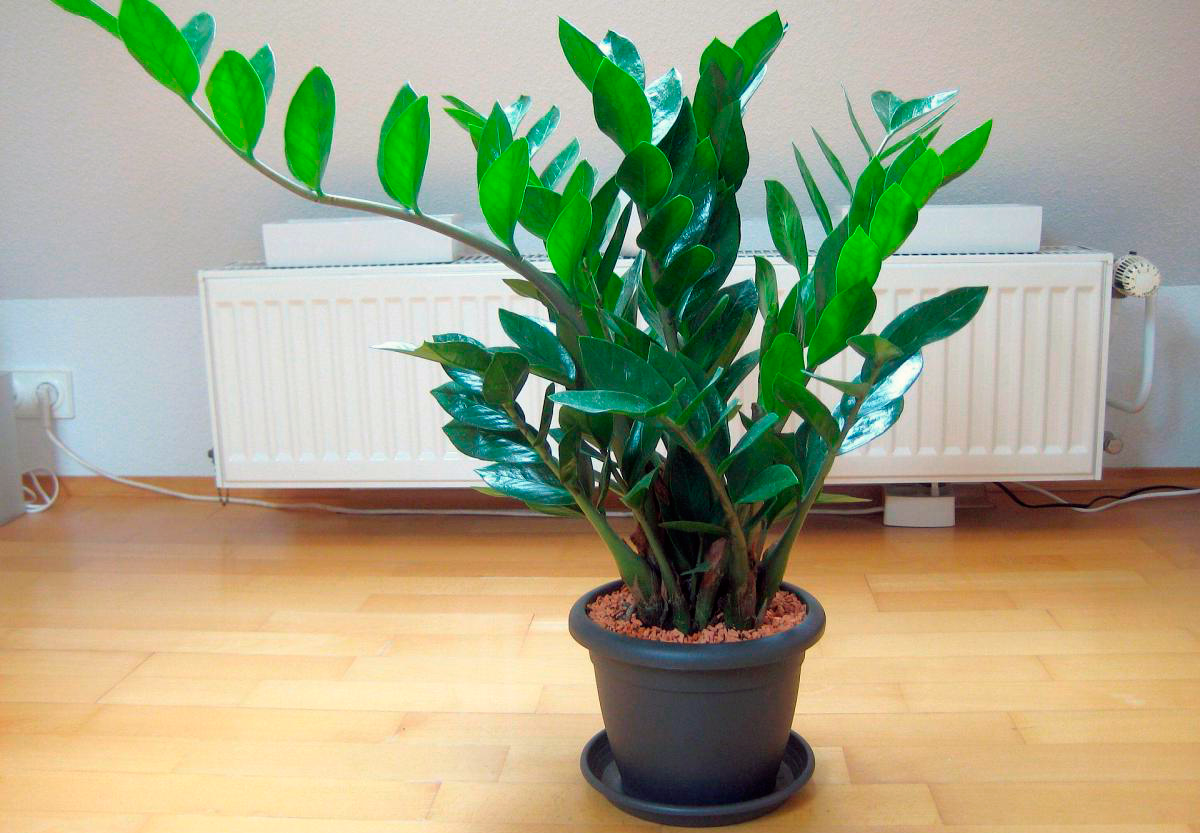
After that, it will be good to arrange a greenhouse, covering the leaves with a glass jar. Rooting zamiokulkas occurs very slowly. It can take two months, and can stretch out for six months, it remains only to wait patiently for periodically watering the seedlings. It is important that the room was warm. After the appearance of the first sprouts, similar to the folded rolls, the plant can be transplanted.
Video about reproduction zamiokulkasa leaf
If you want to grow a tall dollar tree, plant a zamiokulkas. It requires little attention, but it looks very impressive.
The peculiarity of this plant is that its main stem is underground, and the feathery leaves, covered with a waxy coating, grow from above. All parts of the zamiokulkas - leaves, stem and petioles, are adapted to accumulate moisture. Zamiokulkas blooms rarely and only in adulthood. The flower looks more like a thick white ear.
This plant has several names, including the "dollar tree", since it is believed that the zamiokulkas brings wealth to the house. The plant has a few more nicknames: golden, century-old tree, aroid palm tree, fat man.
Growing Zamiokulkas

Unlike many other plants, this loves poor soil, but the ground must be well drained and consist of:
- small pebbles;
- sand;
- expanded clay or perlite.
Planting a dollar tree
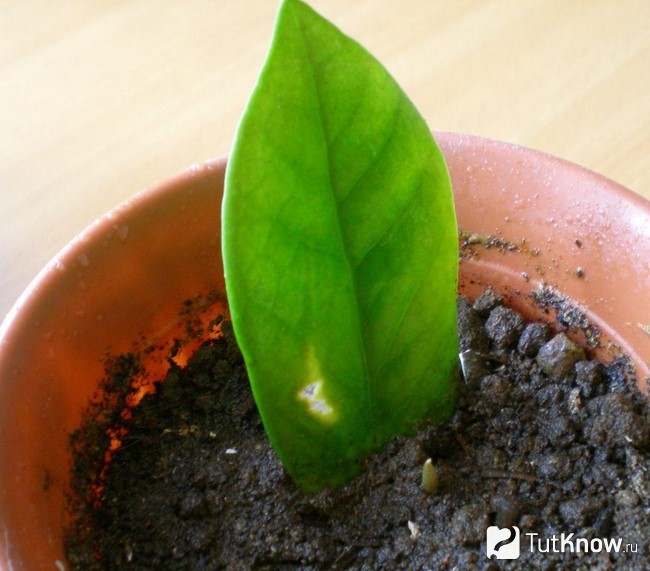
With the same soil mixture fill the pot when transplanting zamiokulkasa. It is produced in spring or summer, as the rhizome fills the old pot. Mature plants are replanted every few years, and young need to be transplanted annually.
It should be borne in mind that the stem is under the soil, so you need to leave more space in the direction of the point of growth. A growing rhizome can deform or even break a plastic container, so it’s best to plant a dollar tree in a clay pot.
When planting, care must be taken that the tuber is not deep in the ground. It must be positioned so that it is only slightly covered with soil.
Zamiokulkas care
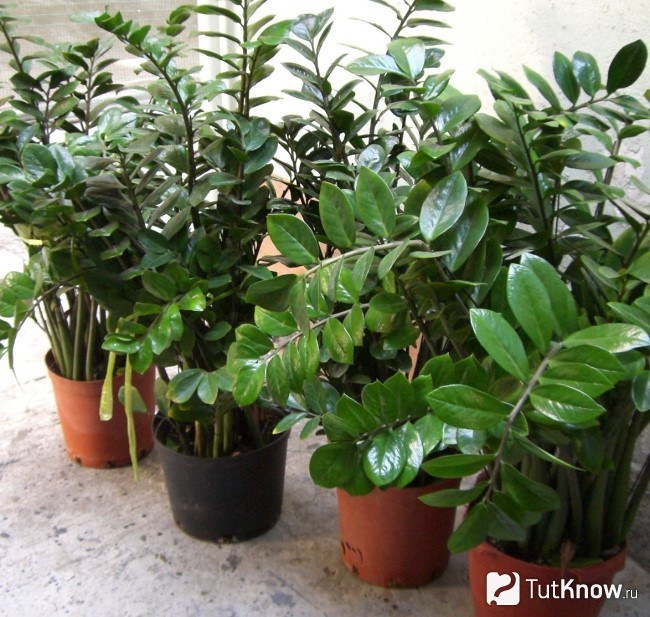
Zamiokulkasu perfectly fits the microclimate of an ordinary apartment with warm and dry air. In a damp, cool room, he will feel much worse. The best place for a dollar tree is a south window sill. In the northern part of the room, the leaves will be smaller than normal or the plant may completely wilt. The optimum temperature is + 18– + 26 ° С.
In the summer it can be placed on the balcony or taken out into the garden. But if a cold snap is transmitted or rains are charged, the zamiokulkas must be brought home urgently to a warm, dry room.
This palm tree is well tolerated by direct sunlight. Even if you forget to water it on time, the plant can hold out for a period, since at this time it will draw moisture from the leaves, which have the ability to accumulate water.
In autumn and winter, watering zamiokulkas is rarely needed - 1-2 times a month. In the warm season it is watered more often - as the soil layer dries. Golden tree likes spraying, which should be in moderation.
It is necessary to feed zamiokulkas only once a year - during the growing season. The plant does not like when water for irrigation and spraying contains various impurities, so it needs to be heated to + 70 ° C and then cooled. Heating will help evaporate certain harmful elements, such as chlorine.
Zamiokulkasa reproduction
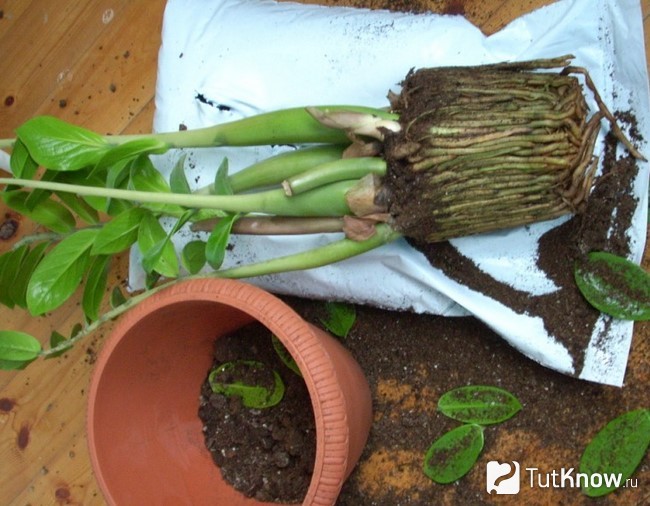
Seeds at home to multiply a dollar tree is almost impossible. Here it is done only by cuttings, leaves and dividing the root system. The latter process is similar to the method of reproduction of cacti - after dividing the rhizomes, it is dried and transplanted.
Separate the stalk from the dollar tree and dry it. Plant it in a light drained substrate so that the leaf on the stem is above the soil surface.
Leaf plate reproduction is the slowest method presented. The first 3 leaves will appear only in a year. But then multiply Zamiokulkas in this way is easy. Cut the sheet, place it in a small container, for example, in a plastic cup with wet sand and cover the jar.
If you or children accidentally break a golden tree branch, do not throw it away, but put it in water. Change it periodically. It should be patient, as the first roots will not appear soon. But when this happens and they grow back a little, plant a branch in the prepared soil, and you will have another zamiokulkas.
Zamiokulkas diseases and pests
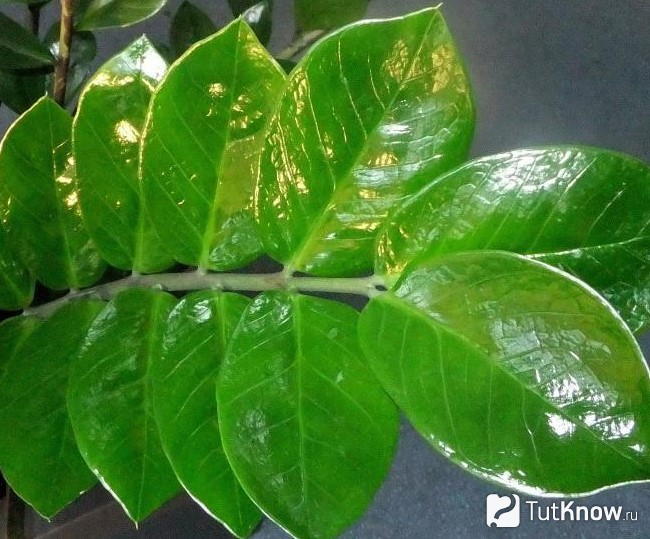
Yellowing of zamiokulkas leaves is the most common problem. Yellowing old is a natural process. But if this fate befalls young people, then the cause may be a strong waterlogging of the substrate. This leads to the decay of part of the root system.
If this happened to your golden tree, remove it from the pot, carefully remove the soil from the roots and carefully inspect them. If you see that the rhizome is rotten, cut out these parts and sprinkle the cleaned places with crushed coal, and the plant itself, both its land and underground parts, thoroughly spray it with a solution of the preparation "Fundazol" or "Oxy". Give a little dry place cut, and then plant Zamiokulkas in new soil poured into the pot.
The cause of yellowing foliage can be drafts. Because of the spider mite, the leaves of the golden tree can dry and coagulate. You can see his presence on the plant, if you look at the sheet, the tick envelops it with cobwebs. It is necessary to immediately begin to fight this pest, otherwise the plant may die. Will help get rid of spider mites tobacco solution, spraying with plain water. If the plant is in the garden, then you can spray it with a solution of sulfur.
If the leaves began to dry quickly and curl up, then the plant attacked the plant louse. Wash it with water with alcohol and rubbed with household or liquid soap. You can process the dollar tree and a solution of nicotine sulfate with the addition of soap. After one day, rinse the zamiokulkas under running water. These funds will help to get rid of not only aphids, but also from shchitovki.
For more on cultivating Zamiokulkas, see this video:
